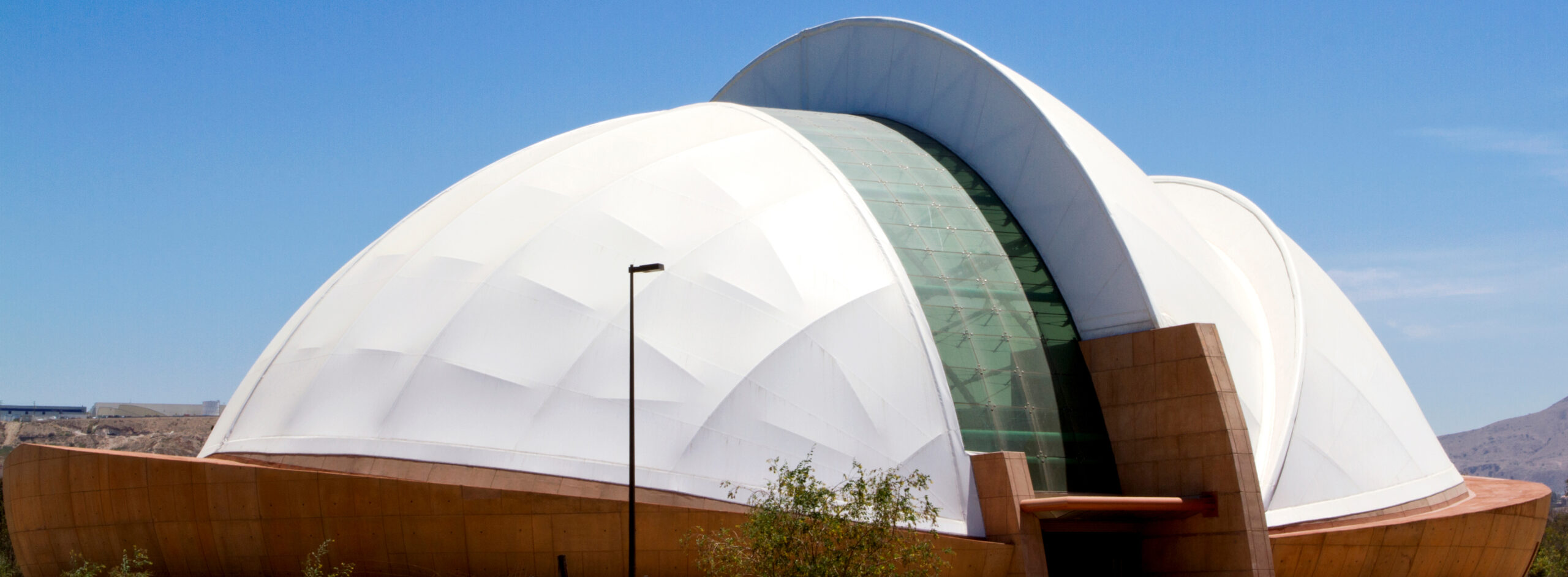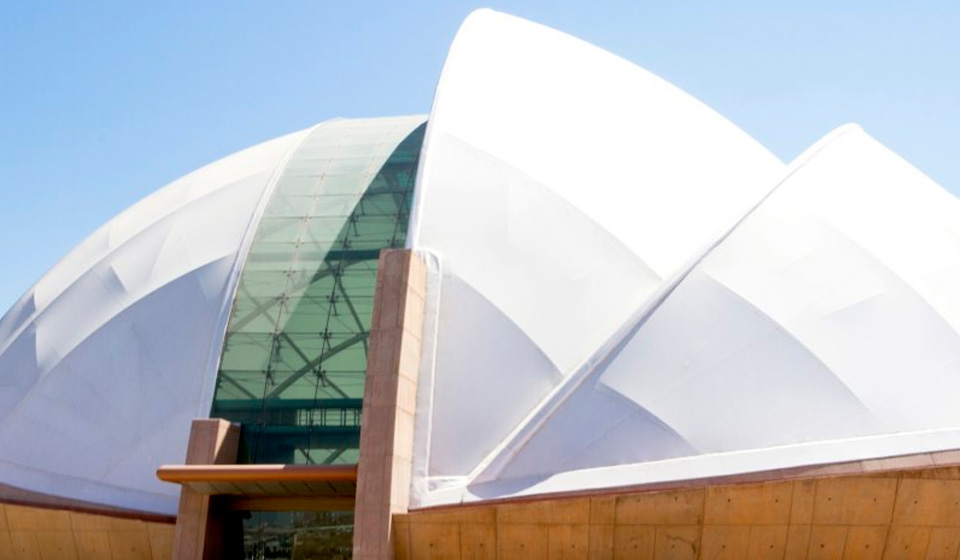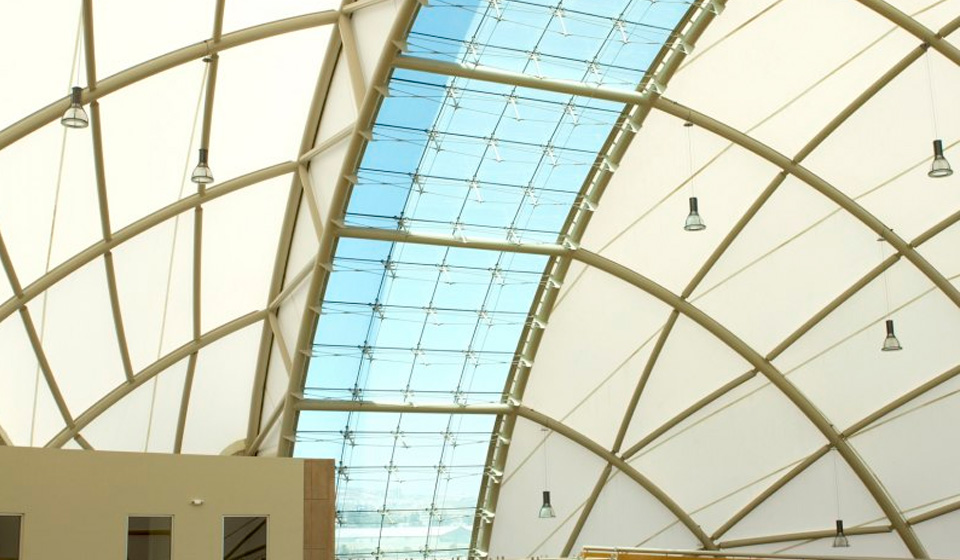

Ambar Interactive Center
This iconic structure was inspired by the human brain and serves as a drug awareness, prevention and educational center for the youth of Mexico.
Fabric Type: PTFE Fiberglass
Market Sector: Institutional
Project Size: 35,000 sq.ft.
Architect: Pedro Ramierz and Gerardo Gallo & Modulo 7
Owner: City of Tijuana, Mexico & State Government of Baja California Norte & Federal Government of Mexico
General Contractor: Concreto Y Acero Funcional
Completion Date: August 9, 2012
Designed by renowned Mexican architect Pedro Ramírez Vázquez and his firm ICH, Birdair, Inc. recently completed the fabrication and installation of a 34,800 square foot PTFE fiberglass membrane roof for the Amber Interactive Center in Tijuana, Baja California, Mexico. This iconic structure was inspired by the human brain and serves as a drug awareness, prevention and educational center for the youth of Mexico.
The left and right "hemispheres" of the structure match the asymmetry of the brain and pay homage to the different functions of each side. The design of the structure is split by a band of glass with a smooth half-dome on one side and two overlapping domes on the other side.
"The client requested a memorable structure, which this building delivers with its pristine white roof silhouette. Located in Mexico, the PTFE-coated fiberglass fabric membrane roof of the Amber Interactive Center will benefit from the material's high degree of translucency, which subtly allows natural light to filter through the space," says Michele R Taylor, Business Development Manager, Birdair.
Known as Centro Ambar to Tijuana natives, this project was built by the government of Tijuana with support from the state and federal governments. The museum is located next to the Morelos Park and forms part of a cultural corridor that starts with the interactive museum and ends with the State Arts Center, all at the level of the nearby river. The Amber Interactive Center is a project that aims to teach children about the problems caused by drug addiction. The facility is made up of four rooms and in those areas, visitors will learn on topics such as science, the human brain, addiction and a life plan, and all related to the consumption of drugs. The museum is expected to educate approximately 150,000 to 200,000 children annually.

